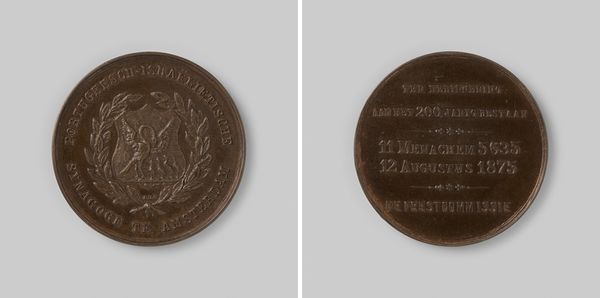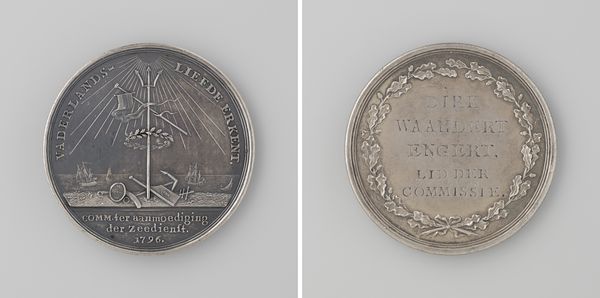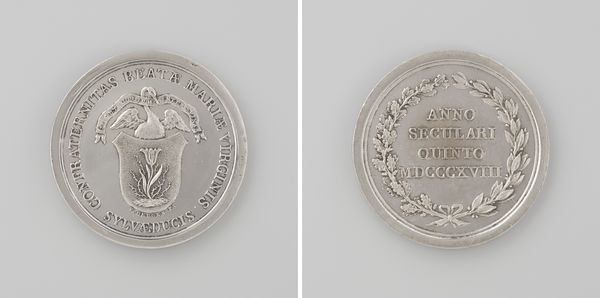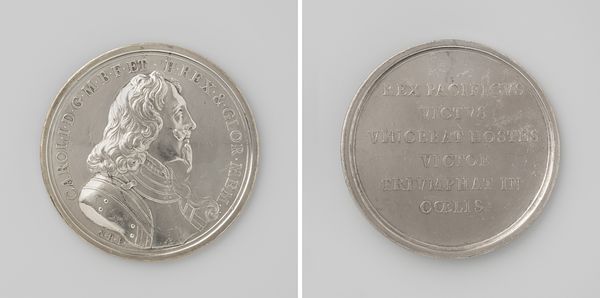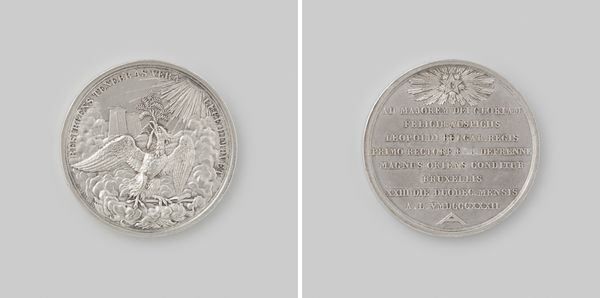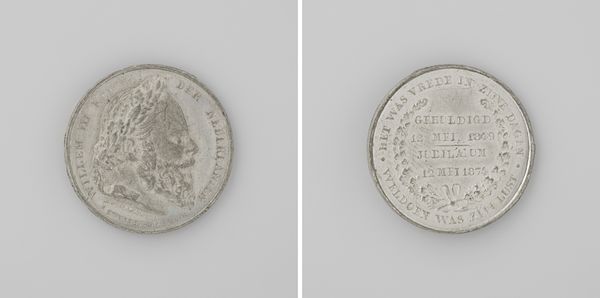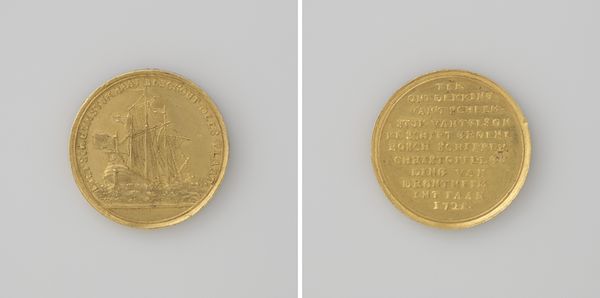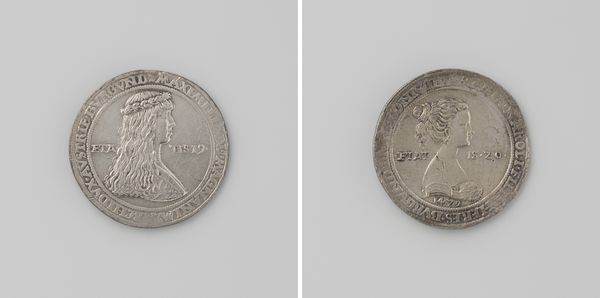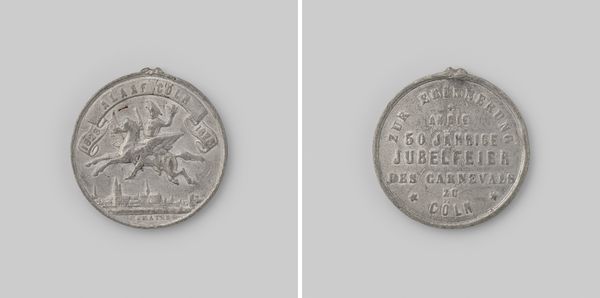
Tweehonderdjarig bestaan van de Portugeesch-Israëlietische Synagoge te Amsterdam 1875 1875
0:00
0:00
graphic-art, print, metal, engraving
#
portrait
#
graphic-art
# print
#
metal
#
history-painting
#
decorative-art
#
engraving
#
calligraphy
Dimensions: diameter 3.5 cm, weight 14.97 gr
Copyright: Rijks Museum: Open Domain
This commemorative coin was made by J. Postmus in 1875 to celebrate the bicentennial of the Portuguese-Israelite Synagogue in Amsterdam. Within a wreath, we see Moses receiving the Tablets of the Law on Mount Sinai. This recalls ancient images of divine law being handed to rulers, such as the Code of Hammurabi, where the king receives laws directly from the god Shamash. The Tablets symbolize divine authority, echoing through time in other contexts. Consider how the representation of law evolved; Roman emperors shown with scrolls of law, or Christian kings depicted with bibles symbolize spiritual and legal power, with roots in ancient depictions of divine endorsement. Just as the figures of Moses or Hammurabi connect us to deeply held beliefs about justice and governance, the Tablets invite us to consider how the transmission of cultural values engages the subconscious to maintain collective memory. The choice to show Moses, rather than inscribe the ten commandments, allows the viewer to connect emotionally to the scene. The symbol resurfaces, evolves, and takes on new meanings through history.
Comments
No comments
Be the first to comment and join the conversation on the ultimate creative platform.

